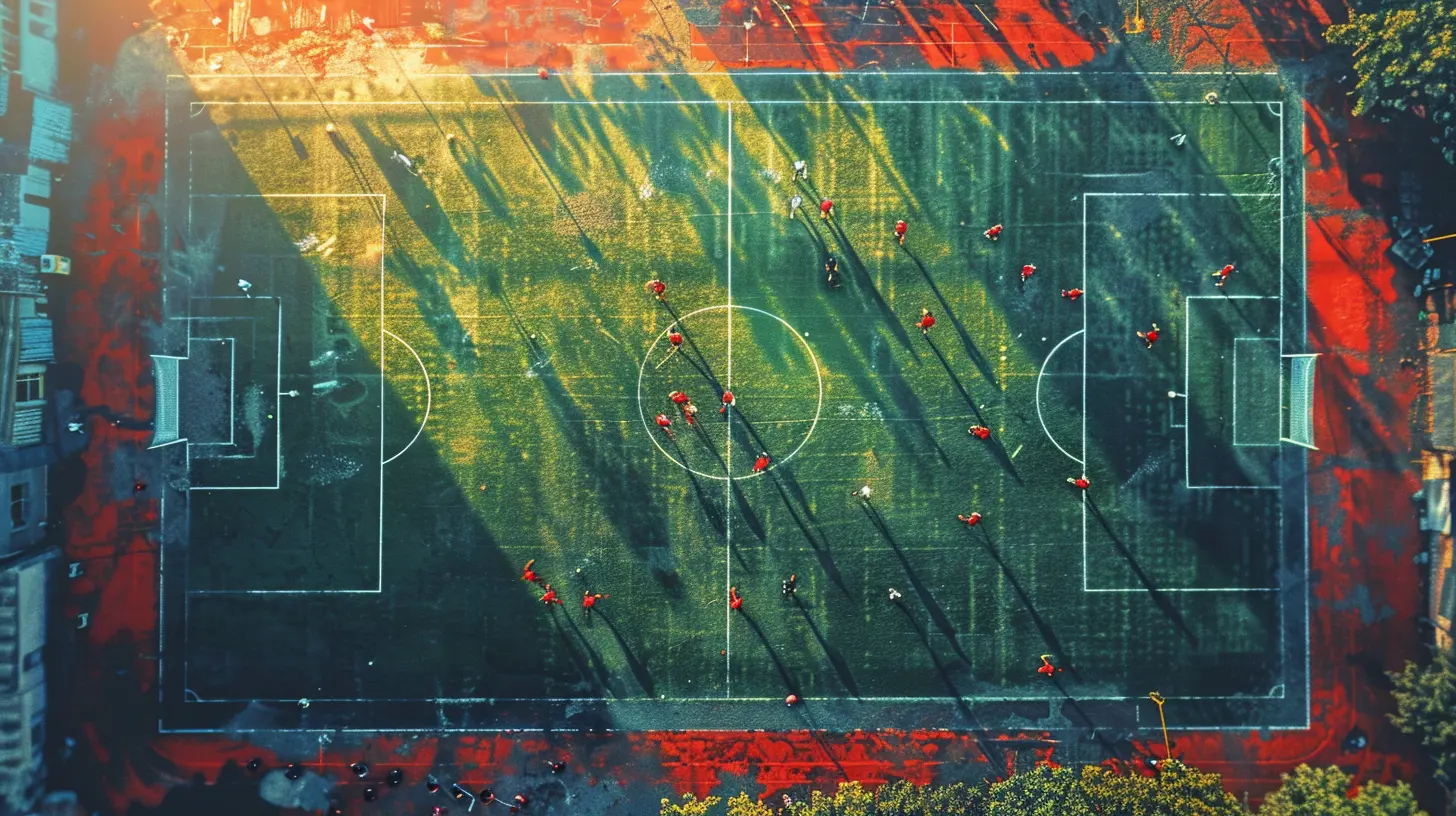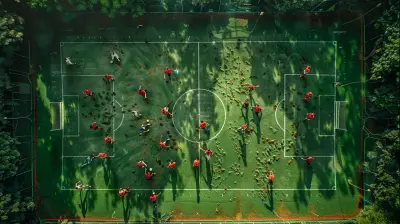How to Exploit Space in Transition Play
21 November 2025
Ah, transition play—the fine art of turning defense into attack in the blink of an eye. If you're still wondering why your team struggles to capitalize on counterattacks, don't worry. You’re not alone. Plenty of teams move like a herd of lost sheep when they win the ball back.
But fear not, because today, we're diving deep into the wizardry of exploiting space in transition play. By the time you're done reading, you’ll have enough knowledge to feel like Pep Guardiola (minus the turtleneck and billion-dollar squad).

What Is Transition Play?
Before we go all-in on space exploitation, let's clarify what transition play actually is.Transition play refers to those crucial moments when possession changes hands—either from attack to defense (defensive transition) or from defense to attack (offensive transition). The faster and smarter your team plays during these moments, the better your chances of catching the opposition napping.

Why Is Space So Important?
Space is every footballer's best friend. No space? No passing lanes. No dribbling room. No time to breathe. Basically, it turns your attack into a boring game of hot potato.In transition play, space matters because:
- Defenders are often out of position.
- The opponent is usually unorganized.
- Quick movement can dismantle an entire formation.
So, if you're not exploiting space in transition, you're wasting golden opportunities. Let’s fix that.

How to Exploit Space in Transition Play
1. Win the Ball with Intent
Winning possession is great and all, but if your players immediately start playing "safe" passes backward, you've just thrown away your best chance. Instead, train your team to:- Look forward IMMEDIATELY after winning the ball.
- Identify gaps before even receiving the ball.
- Make quick, decisive passes rather than hesitating.
If you're too slow, congratulations—you've just given the opposition time to recover, and now you're back in a slow, predictable buildup.
2. The Art of Verticality
Horizontal passing might make you feel like you have control, but transition play isn’t about control—it’s about chaos. Controlled chaos, to be exact.Verticality in football is the key to punishing teams in transition. This means:
- Playing the ball forward quickly.
- Breaking lines rather than recycling possession.
- Sprinting into open zones instead of strolling around.
Think of it like a fast break in basketball—the goal is to move up the pitch before the opposition has time to react.
3. Exploit the Half-Spaces
Ah, the half-spaces. You know, those beautiful little pockets of real estate between the central midfielders and full-backs? Yeah, those spots are pure gold in transition.Why? Because:
- Central defenders hate being dragged out wide.
- Midfielders don’t always track runners properly.
- You create angles that completely unbalance a defense.
Train your wingers and attacking midfielders to make diagonal runs into these gaps during counterattacks. It’s a nightmare for defenders to deal with—trust me.
4. Overloading One Side Before Switching
One of the oldest tricks in the book is to bait the opponent into thinking the attack is going in one direction before quickly switching play.- Progress the ball down one flank.
- Drag defenders toward the ball.
- Quickly switch play to the weak side.
This works exceptionally well against aggressive pressing teams who fly toward the ball like moths to a flame.
5. Use Decoy Runs to Stretch the Defense
Who knew running without the ball could be so useful? Decoy runs don’t show up on the stat sheet, but they’re absolutely vital for creating space.- Strikers can make dummy runs to drag defenders out of position.
- Wingers can cut inside, creating room for an overlapping full-back.
- Midfielders can move wide to create central passing options.
A well-timed decoy run is like a magician’s trick—and defenders are the poor, unsuspecting audience.
6. Quick One-Two Combinations
Short, quick passing sequences can slice through a defense before they even have time to react. This is especially useful in tight spaces where dribbling isn’t an option.- Use one-two passes to bypass pressing defenders.
- Encourage midfielders and attackers to play at high tempo.
- Keep defenders guessing—predictability is your enemy.
Just ask Barcelona circa 2011 how devastating quick passing can be. Spoiler: it's unreasonably effective.
7. Recognizing Numerical Advantages
Here’s a simple rule—if you have more attackers than they have defenders, DO NOT slow down. This is your golden ticket to a high-quality chance.- If it’s 3v2, drive forward instead of passing sideways.
- If it’s 4v3, make a dynamic run to create an extra passing option.
- If it’s 2v1, enjoy your easy goal (unless your striker bottles it).
Teams that hesitate in numerical overloads deserve to sit through a three-hour lecture on “How Not to Let Opportunities Slip.” Don’t be that team.
8. Understanding Defensive Weaknesses
Not all defenders are created equal. Some are slow but strong. Others are fast but positionally suspect. If you want to exploit space properly, understand who you're up against.- Slow defenders? Play quick, direct balls into space behind them.
- Aggressive defenders? Use a feint or fake to make them commit.
- Lazy defenders? Keep moving—they’ll lose track eventually.
Doing your homework on the opposition’s weaknesses makes transition play even more effective.
9. Counter-Pressing: The Ultimate Weapon
If your team loses the ball, don’t just sulk—win it back immediately. Counter-pressing (a.k.a. gegenpressing for the tactical hipsters) is a fantastic way to:- Win the ball close to the opponent’s goal.
- Exploit their disorganization.
- Force bad decisions from defenders under pressure.
It’s essentially transition play in reverse. And when done well, it's an absolute nightmare for your opponents.
10. Keep It Simple—Don’t Overcomplicate
Sometimes, players think they need to pull off a dozen stepovers, a backheel flick, and a ridiculous fancy pass to create a chance. Nope.In transition play, simplicity wins:
- Move into space.
- Pass quickly.
- Be direct.
- Shoot when the opportunity arises.
Football isn’t rocket science. It’s about making the right decisions at the right time.

Final Thoughts
Exploiting space in transition play is about speed, intelligence, and execution. If you can train your team to recognize and attack space instinctively, you’ll start punishing teams in ways they never saw coming.Remember: hesitation kills transitions. The faster you move, the deadlier you become. So, go out there and make your opponents regret every sloppy pass, poor touch, and misplaced attack they attempt.
Oh, and when your team finally masters transition play, just try not to gloat too much. Actually, forget that—absolutely gloat. You’ve earned it.
all images in this post were generated using AI tools
Category:
TacticsAuthor:

Ruben McCloud

